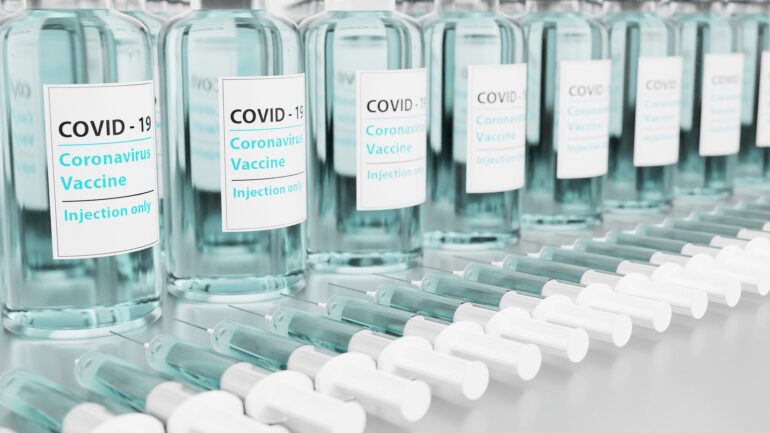TL;DR:
- Unprecedented machine learning study discovers effective drug combinations to prevent COVID-19 from returning.
- Individual factors like age, weight, and other diseases influence the most effective drug combinations.
- Chinese hospital data provides unique insights due to the use of multiple drugs and systematic reinfection prevention measures.
- AI model identifies personalized drug combinations for different demographic groups.
- An innovative approach matches COVID-19 patients with similar characteristics to assess treatment efficacy.
- AI and machine learning have transformative potential in healthcare, including personalized medicine.
Main AI News:
A remarkable breakthrough in machine learning research has uncovered the most potent drug combinations to thwart the resurgence of COVID-19 following initial infection. This groundbreaking study, led by esteemed experts at the University of California, Riverside, harnessed real-world data from a prominent Chinese hospital, setting the stage for a new era in virus prevention.
The study delved deep into the intricate web of factors influencing the efficacy of drug combinations. It was revealed that individual characteristics, including age, weight, and the presence of other underlying conditions, significantly impact the effectiveness of treatments in curbing the virus and preventing COVID-19’s unwelcome return. This cutting-edge research has been published in the highly regarded journal, Frontiers in Artificial Intelligence, solidifying its credibility.
Of particular significance is the wealth of data derived from China, where COVID-19 treatment protocols diverged from those in the United States. While American physicians typically prescribed one or two drugs for combating the virus, their Chinese counterparts administered up to eight distinct medications during the initial phase of the pandemic. This comprehensive approach enabled a more thorough analysis of diverse drug combinations, bringing us closer to unraveling the most effective preventive strategies.
Furthermore, Chinese COVID-19 patients were required to undergo post-hospital discharge quarantine in government-managed hotels. This unique system provided researchers with invaluable insights into reinfection rates and strategies to mitigate COVID-19’s resurgence in a systematic and well-controlled manner. Xinping Cui, a statistics professor at UCR and one of the study’s authors, emphasized, “That makes this study unique and interesting. You can’t get this kind of data anywhere else in the world.”
The journey to prevent COVID-19 through the power of AI commenced in April 2020, a mere month into the pandemic’s grip on the world. While mortality rates commanded considerable attention from researchers during this time, doctors in Shenzhen, near Hong Kong, expressed deep concern regarding the alarming reinfection rates observed in their patients. Astonishingly, nearly 30% of individuals tested positive again within a mere 28 days of being discharged from the hospital, highlighting the urgent need for effective preventive measures.
The analysis incorporated data from over 400 COVID-19 patients, with an average age of 45. The majority of these patients experienced moderate cases of the virus. The study cohort was evenly represented by both genders, and most individuals were treated with diverse combinations of antiviral, anti-inflammatory, and immune-modulating drugs, such as interferon or hydroxychloroquine.
The divergence in responses to different drug combinations among various demographic groups can be attributed to the virus’s unique modus operandi. As Jiayu Liao, an associate professor of bioengineering and co-author of the study, elucidated, “COVID-19 suppresses interferon, protein cells make to inhibit invading viruses. With defenses lowered, COVID can replicate until the immune system explodes in the body and destroys tissues.”
Patients with weaker immune systems before COVID-19 infection require immune-boosting drugs to mount an effective defense against the virus. Conversely, younger individuals often experience an overactive immune response upon infection, which can lead to severe tissue inflammation and potentially fatal consequences. Consequently, their treatment regimens necessitate immune suppressants to prevent COVID-19’s recurrence.
Liao emphasized the need for a paradigm shift in treatment approaches, stating, “When we treat diseases, many doctors tend to offer a single solution for people aged 18 and up. We must now reconsider age differences and other relevant conditions, such as diabetes and obesity.”
In the quest to gauge drug efficacy, scientists traditionally rely on clinical trials where patients with similar diseases and baseline characteristics are randomly assigned to either treatment or control groups. However, this standard approach fails to account for other medical conditions that may influence a drug’s performance among specific subgroups. In this study, real-world data injected confounding factors, compelling researchers to adopt an innovative approach.
Through virtual matching, the researchers paired COVID-19 patients with similar characteristics but undergoing different treatment combinations. This novel technique enabled them to infer the effectiveness of various treatment regimens across diverse subgroups. Xinping Cui shed light on this groundbreaking approach, explaining, “In this way, we could generalize the efficacy of treatment combinations in different subgroups.”
While our understanding of COVID-19 has improved, and the advent of vaccines has significantly curtailed mortality rates, there remain numerous unanswered questions regarding treatment and the prevention of reinfections. Cui expressed hope that their findings would serve as a valuable resource in addressing these ongoing concerns.
This monumental leap in AI and machine learning’s application to COVID-19 research extends beyond the realm of multi-drug combinations. Artificial intelligence has played a pivotal role in disease diagnosis, vaccine development, and drug design. Liao envisions an expanding role for this technology in the future, stating, “In medicine, machine learning and artificial intelligence have not yet reached their full potential. This project exemplifies how we can progress towards personalized medicine.”
Conclusion:
The breakthrough findings from this AI-powered research have significant implications for the market. Pharmaceutical companies can leverage these personalized drug combinations to develop targeted treatments that address individual characteristics and increase effectiveness. The demand for diverse drug combinations and tailored therapies is expected to rise, driving innovation in the healthcare industry. Furthermore, the integration of AI and machine learning in healthcare will continue to expand, creating new opportunities for technology providers and accelerating the development of personalized medicine. Businesses should be prepared to adapt their strategies and offerings to meet the evolving needs of the market in this transformative era of healthcare.

